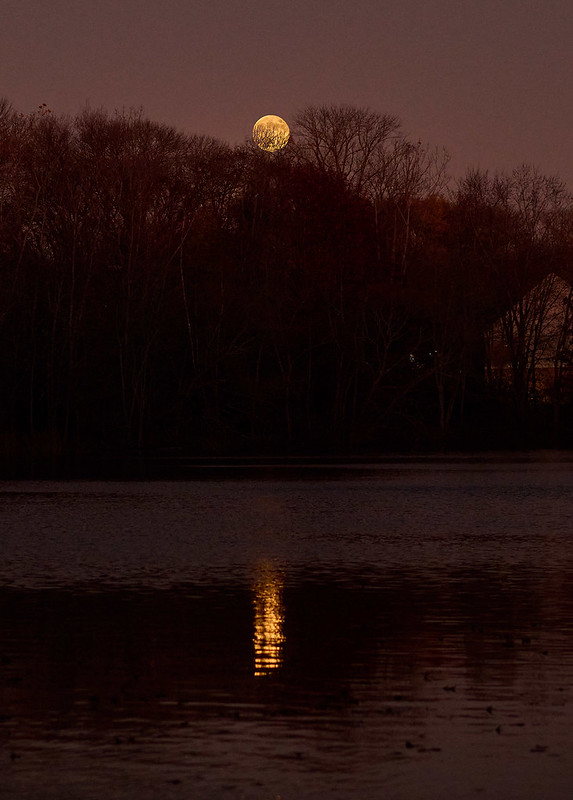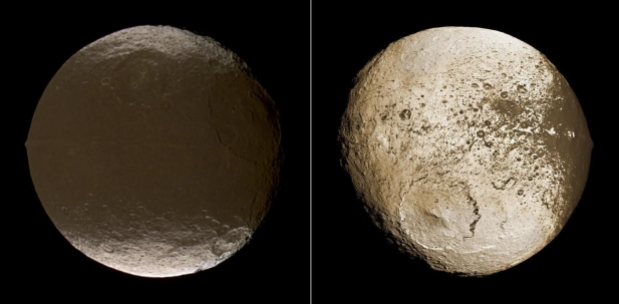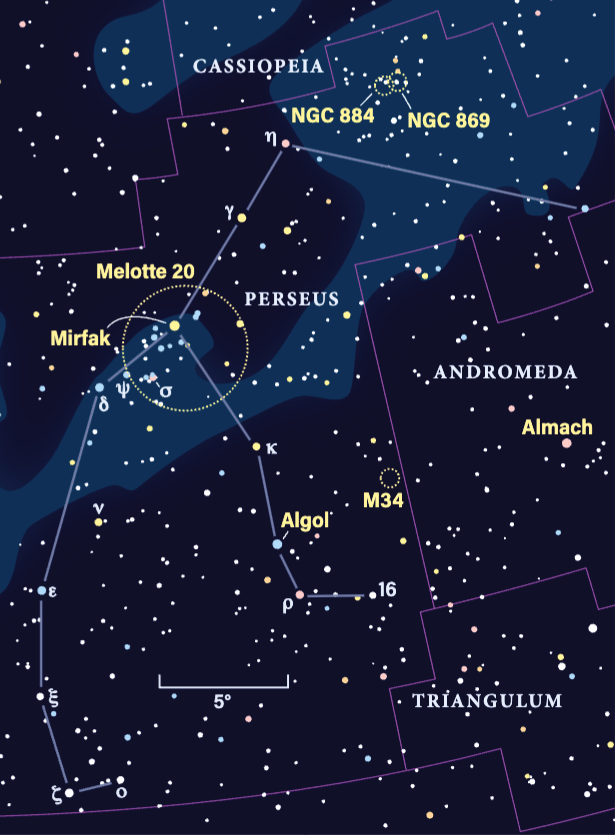
Friday, November 24
Shortly after sunset tonight, celebrate the height of the fall season by finding a group of migrating birds in the night sky — except these birds are stars flying through the constellation Scutum as it slowly sets.
We’re looking for the Wild Duck Cluster, also cataloged as M11. Binoculars will easily show the cluster as a bit of celestial fuzz, while a telescope and increasing magnification will pull out numerous stars as individual points of light. Around 6 P.M. local time, you’ll find this group of young stars some 25° above the southwestern horizon. They’re in Scutum, which lies directly below Aquila the Eagle, home of the bright star Altair. To locate M11, first find magnitude 3.4 Lambda (λ) Aquilae in southern Aquila. Just below and southwest of this star is 4th-magnitude 12 Aquilae; together these two stars form the Eagle’s tail. Draw a line between them (from Lambda to 12) and follow it for about twice the length again — that will land you right on the Wild Duck Cluster. This name comes from the way its brightest members look like a “V” of migrating birds.
In all, the cluster stretches about 14′ across and contains nearly 3,000 stars, at least 500 of which are brighter than 14th magnitude. Even if it doesn’t look to you like a flock of migrating ducks, it’s certainly still a sight to see! Make sure to get out early — the Wild Duck Cluster sets tonight around 8 P.M. local time.
Sunrise: 6:55 A.M.
Sunset: 4:38 P.M.
Moonrise: 2:57 P.M.
Moonset: 3:46 A.M.
Moon Phase: Waxing gibbous (92%)
*Times for sunrise, sunset, moonrise, and moonset are given in local time from 40° N 90° W. The Moon’s illumination is given at 12 P.M. local time from the same location.
Saturday, November 25
The Moon passes 3° north of Jupiter at 6 A.M. EST; however, observers in the eastern half of the U.S. will have to look a little earlier in the morning — say, around 4 A.M. local time — to catch them at their closest. Around then, the two will sit side by side roughly 10° above the western horizon, with Jupiter’s pointlike light to the left of the bright waxing Moon.
Both are in Aries, hanging about 23° below the tightly clustered stars of the Pleiades in Taurus. The Moon is now some 95 percent lit, with only a sliver of its western limb remaining in shadow.
Jupiter, glowing at magnitude –2.9, looks magnificent through a telescope, even with the Moon’s background light. Depending on when you observe it, you may catch Europa and its shadow crossing the cloud tops: The moon begins transiting the planet’s southern regions around 3 A.M. EST, while its shadow follows just over an hour later, appearing by 4:10 A.M. EST. Europa finally slips off the disk around 5:15 A.M. EST; the shadow doesn’t disappear until 4:23 A.M. MST, after Jupiter has set for the eastern half of the country.
During the transit, Callisto lies far east of the planet, while Io lies closest on the west, with Ganymede farther out on that same side.
Sunrise: 6:56 A.M.
Sunset: 4:37 P.M.
Moonrise: 3:26 P.M.
Moonset: 4:59 A.M.
Moon Phase: Waxing gibbous (97%)
Sunday, November 26
Continuing through Aries, the Moon passes 3° north of Uranus at 4 A.M. EST this morning. This pairing is visible until about an hour before sunrise, by which time Uranus has just disappeared below the horizon. The best time to catch them will be a bit earlier still, again around 4 A.M. local time.
At magnitude 5.7, Uranus might normally be just visible to the naked eye from a dark location. But with the Moon out, the bright background light will make this impossible. Instead, you can enjoy the ice giant through binoculars or a telescope. When looking out toward the horizon, Uranus will be located just to the lower left of the Moon this morning. It will appear through optics as a tiny, 4″-wide “flat” star, perhaps with a grayish cast.
Look back to the Moon, and some observers might see our satellite just skirt or perhaps even block the light from 4th-magnitude Botein (Delta [δ] Arietis) around 5:50 A.M. EST. Whether the Moon fully covers the star will depend heavily on your location.
And if you’re more of an evening observer, you can catch the nearly Full Moon tonight just south (to the lower right) of the Pleiades open cluster, also known as M45, offering a beautiful pairing for any astrophotographers wanting to capture the scene. This could be a great opportunity to try out some nightscape photography as well — rather than just going for a zoomed-in sky shot, try imaging the larger view of the landscape plus the sights in the night sky above it.
Sunrise: 6:57 A.M.
Sunset: 4:37 P.M.
Moonrise: 3:59 P.M.
Moonset: 6:12 A.M.
Moon Phase: Waxing gibbous (99%)

Monday, November 27
Full Moon occurs this morning at 4:16 A.M. EST. The November Full Moon is also called the Beaver Moon, likely because this is the time of year that beavers begin to spend more time in their dens for the winter.
You can spot the Full Moon rising in the east around sunset, still in the constellation Taurus. It sits to the upper left of the bright red giant star Aldebaran, set into the V-shaped face of Taurus, serving as the eye of the Bull.
The Moon certainly takes center stage when it’s Full, offering a big, bright target to enjoy through any binoculars or telescope. The entire nearside is now lit and shadows are at their smallest because the Sun appears overhead — it’s lunar noon. This can wash out some detail, but it’s still a great time to really explore our satellite, particularly as its bright light washes out many fainter objects in the sky. If the Moon is too bright through your optics, try wearing sunglasses at the eyepiece or screwing in a Moon filter. You can alternatively bump up the magnification of your scope, which cuts down on the amount of the lunar surface in your field of view, which can reduce its eye-watering brightness.
Once you’re done with the Moon, take a look at the constellation Perseus, which lies above our rising satellite in the sky. The constellation’s beta star, Algol, is a variable with a period of 2.87 days. It’s just coming up out of a minimum after fading to magnitude 3.4 earlier this afternoon. By evening, it should be just starting to brighten again, slowly increasing toward magnitude 2.1. Take a look at Algol and then nearby Mirfak — use the chart at right to identify them within the constellation. Compare the brightness of the two stars. Mirfak is slightly brighter than magnitude 2; at its brightest, Algol appears similar in brightness to the naked eye, but at its faintest, it is noticeably dimmer. How do the two compare tonight? Come back tomorrow and check again!
Sunrise: 6:58 A.M.
Sunset: 4:36 P.M.
Moonrise: 4:38 P.M.
Moonset: 7:25 A.M.
Moon Phase: Full
Tuesday, November 28
Venus passes 4° north of the bright star Spica in Virgo at 4 A.M. EST. You can catch them in the early-morning sky before sunrise, rising to more than 25° above the southeastern horizon.
Venus is utterly unmissable at magnitude –4.2, the brightest point of light in the eastern sky. To its lower right is Spica, a magnitude 1 star. Check out Venus through a telescope and you’ll see that the planet is not fully lit, but presents a 67-percent-illuminated crescent.
Spica is a brilliant point of light through any optics. Although like many stars it is a binary, the components cannot be split in a backyard scope and it appears as a single star. About 14.5° to Spica’s northwest, though, is magnitude 2.7 Porrima. This binary is easy to separate and a favorite for double-star observers.
Slide back to Venus and Spica, then look to the pair’s lower right. See if you can pick out the not-perfectly-square body of Corvus the Crow, who lies to Virgo’s south. Northeast of Venus and Spica is Boötes the Herdsman, whose brightest star, Arcturus, shows off a golden glow through a telescope, betraying its cool red giant nature. And directly above the center of Virgo is Coma Berenices, whose namesake star cluster (also cataloged as Melotte 111) is one of the sky’s largest and brightest open clusters, spanning some 5° and glowing at magnitude 1.8. You’ll find it just over 2° south of 4th-magnitude Gamma (γ) Comae Berenices.
Sunrise: 6:59 A.M.
Sunset: 4:36 P.M.
Moonrise: 5:27 P.M.
Moonset: 8:33 A.M.
Moon Phase: Waning gibbous (98%)

Wednesday, November 29
Saturn’s moon Iapetus reached greatest western elongation late on the 27th. The two-toned satellite is brightest when at western elongation, now nearly 10th magnitude and easier than usual to pick up in a telescope.
Let’s start by finding Saturn, which sits high in the south just after sunset. About an hour after the Sun disappears is the best time to begin observing, as the planet slowly sets in the ensuing hours. Saturn lies in southern Aquarius, glowing at magnitude 0.8. Through a telescope, its magnificent rings stretch nearly 40″, a fan-favorite sight at the eyepiece.
The planet’s brightest moon, 8th-magnitude Titan, lies about 2.5′ east of the planet’s center tonight. This moon should be easy to pick up in binoculars or a telescope. For fainter moons, a telescope will be best: 10th-magnitude Tethys is also east of Saturn, just off the edge of the rings. Dione and Rhea, also 10th magnitude, are to Saturn’s west, slightly above and beyond the plane of the rings. Dione is closer, with Rhea about 0.5′ farther west.
Now, for Iapetus. The moon now lies some 8.5′ west of Saturn’s center, much farther out than Titan but in the same plane, just on the opposite side of the ringed planet. See if you can find it — with its icy, lighter side turned earthward, Iapetus appears brighter than at its greatest eastern elongation, when the darker portion of its surface is facing us and it drops to nearly magnitude 12. As Iapetus slowly begins to move east again it will fade as well, so the end of November and into early December is the best time to catch it for the rest of the year!
Sunrise: 7:00 A.M.
Sunset: 4:36 P.M.
Moonrise: 6:22 P.M.
Moonset: 9:34 A.M.
Moon Phase: Waning gibbous (94%)
Thursday, November 30
Cassiopeia the Queen is now high overhead in the north shortly after dark. She is one of the circumpolar constellations, which appear to swing in a circle around the North Celestial Pole, marked by the faint star Polaris at the end of the Little Dipper’s handle.
With some dark window this evening between sunset and moonrise as the Moon begins to wane, this is the perfect time to enjoy some of the Queen’s beautiful clusters.
Open cluster NGC 129 is the easiest to find once you trace out the constellations’ famous W asterism in the sky. Find that W — currently on its side or perhaps even starting to tip over and look more like an M as it arcs overhead — and then locate magnitude 2.3 Caph (Beta [β] Cassiopeiae) at the western end and similarly bright (magnitude 2.2) Gamma Cassiopeiae, which marks the high point of the W’s center. Halfway between these two stars is NGC 129, which glows with a total magnitude of 6.5 and spans just over 20′ of sky. Through binoculars it may look only like a blur; a telescope and higher magnification should start to bring out its myriad stars.
Move toward the eastern end of the W and you’ll find 3rd-magnitude Epsilon (ϵ) Cas at its end. From there, skim about 5° southeast to land on Stock 7, a tiny collection of some 30 stars that many observers envision as a curving cosmic croissant. Astrophotographers take note: This cluster, also called Markarian 6, just overlaps a portion of the Heart Nebula (IC 1805), a popular photographic subject. Unfortunately, this cloud of glowing gas doesn’t show up well to the eye even through a telescope — but it photographs beautifully, particularly with a small scope (i.e., wide field of view) and a camera or filter sensitive to Hydrogen-alpha light.
Sunrise: 7:01 A.M.
Sunset: 4:35 P.M.
Moonrise: 7:24 P.M.
Moonset: 10:25 A.M.
Moon Phase: Waning gibbous (88%)
Friday, December 1
Let’s open December with the bright planet Mercury, visible in the evening sky just after sunset. Some 30 minutes after the Sun disappears, the magnitude –0.4 planet still sits about 6° above the southwestern horizon. If you can get to a location slightly higher than your surroundings and with few trees or buildings to the west, it will offer the best views.
Through a telescope, the tiny planet is roughly 70 percent lit, roughly the same phase as Venus. However, Mercury is just 6″across, its disk tiny because the planet itself is so small, less than 40 percent Earth’s (and Venus’) diameter. Far to Mercury’s upper left and nearly due south is Saturn, while Jupiter should be easily visible in the east. Uranus lies some 13.5° east of Jupiter and Neptune is 42° to the gas giant’s west — neither ice giant will be visible in the twilight, and only Uranus might eventually reveal itself to the naked eye. Neptune never grows bright enough to spot without optical aid.
Moving back to Mercury, look high above the planet: The first star that may pop out from the twilight is Altair, which you might remember from earlier in the week. It’s the brightest star in Aquila the Eagle and it anchors one point of the Summer Triangle. To Altair’s right, you may also see Vega as one of the evening’s first stars, and above Vega is Deneb. These are the other two points in the Summer Triangle. That triangle is now setting earlier and earlier each night, a signal that wintertime is fast approaching.
Sunrise: 7:03 A.M.
Sunset: 4:35 P.M.
Moonrise: 8:27 P.M.
Moonset: 11:06 A.M.
Moon Phase: Waning gibbous (81%)

Sky This Week is brought to you in part by Celestron.
